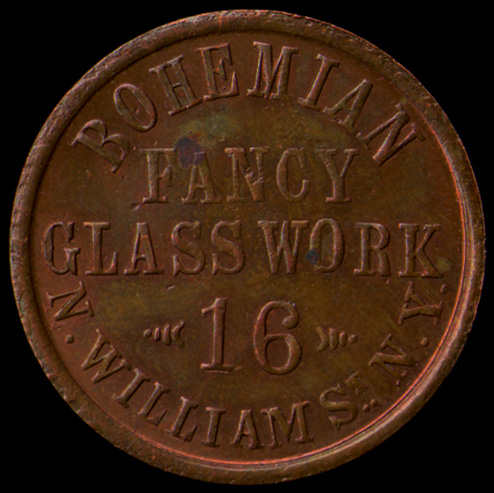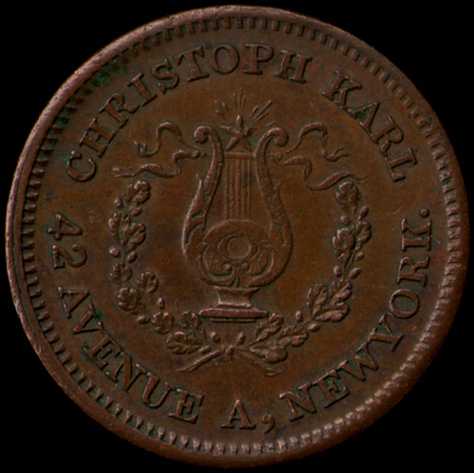Planning and Pricing
Because the Luna City Mint is just starting out, it will take time to refine our approaches to the various technical, artistic, and economic problems posed. So, it is hard to make definitive statements now about costs, but we can at least estimate the results we hope to achieve, and provide guidelines which should remain qualitatively true. Work for the Luna Project (not for customers!) will allow us to develop better estimates.
Planning Your Coinage
There are several elements to be considered before starting a coinage project. Among them are :
- Size
- How big do you want the finished piece to be? Our most common size, twenty-five millimeters in diameter, is just larger than a US quarter-dollar coin. You might think you want something larger, but it's surprising how much can be done in such a small space.
- Metal
- Our standard blanks are bronze and nickel-silver. We also have aluminum, both natural and gold-tone, and we can supply precious metals. Because we strike one piece at a time, by hand, your order can be made with specified numbers of pieces in each of multiple compositions.
- Quantity
- If you only want one piece, or you want a hundred thousand pieces all at once, the Luna City Mint is probably not your best bet (although we'll work to make it happen for you). Maybe you want a dozen to start with, with more to follow sometime later ; maybe you need exactly one hundred forty-three pieces, all in bronze except for nineteen in nickel-silver and five in silver, to go to specific people, and then you want the dies defaced.
- Design
- This is where your individuality really comes to the fore, and where you have a chance to present your message, or display your art. Do you need lettering? A logo? Something more sculptural?
Elements of Pricing
At the Luna City Mint, transparency is a watchword. We
want you to have confidence in our services, and part of that is ensuring
that there are no unexpected charges.
What you pay is made up of four elements :
Die Charges
The die charge is a one-time expense. We cut the die to your order, and it is your property. You can leave it with us for safekeeping and future use, if you wish ; or we will hand it over to you. We will even deface it, if you so desire, so that it cannot be used again.
The cost for die-cutting is based on the size of the die and the complexity of the design. A more complex design means more time spent in cutting. For estimation purposes, we divide designs into three complexity grades (see illustrations). Grade 1 is mostly lettering, with minor flourishes, and we expect to price it at about fifty dollars for a typical 25 millimeter size. Grade 3, with extensive sculptural detail, would be $100, and Grade 2, with logo graphics, would fall in between. Larger pieces will cost somewhat more, smaller ones somewhat less. By way of comparison, a 40 mm die, has more than two and a half times the surface area of a 25 mm die, while a 15 mm one has little more than a third.
A certain amount of artwork preparation is included in this charge, but if your design is not ready for cutting, there may be an additional art charge. Mottoes should be, at a minimum, accompanied by a sketch to show the desired layout, and notes on lettering style.

Complexity Grade 1, the least costly type of die
(Lettering with minor ornamental flourishes)

Grade 2, verging on Grade 3
(Lettering, plus a logo design with some sculptural detail)
Metal Charge
The metal charge is based on what it costs us to procure the blanks for striking your pieces. We expect to pay about 40 cents for a typical 25 mm bronze or nickel-silver blank. The US Mint would pay less than 10¢ for the same thing, but we don't have the luxury of buying a hundred tonnes of metal at once. Our larger pieces are normally made in aluminum, anodized either gold-tone or clear (silver effect). The anodizing treatment does add something to the cost, but in addition to providing color options, it also protects the surface of the piece. If you want strikes in precious metal, we can provide that, at a price based on the cost of metal. Because striking is done by hand, one piece at a time, there is no problem with using multiple different metals in the same order.
Workmanship Charge
The workmanship charge pays the regular expenses of your Mintmaster. For the standard 25 mm size, this is typically 10¢ per piece, calculated to provide an hourly gross wage of $10 (which isn't much) at a production rate of a hundred strikes an hour. For larger pieces, production will be slower, and harder metals such as bronze or silver may require more than one blow of the press ; so prices will be accordingly higher.
Special Services and Additional Charges
- Edge Treatment
- Unless otherwise specified, all pieces of 25 mm or larger have a lettered edge, reading "Luna City Mint", and smaller pieces have a plain edge. A grooved edge can be substituted at no extra charge. For any other treatment, edge dies will have to be made, which will incur a die charge of $50. As with the face dies, these are your property.
- Engraving
- We can place names, serial numbers, or other engraving on your pieces. Standard price is $1 per piece, up to 20 characters, and 50¢ for each additional 10 characters.
- Packaging
- If you want us to package your pieces, we can offer a variety of options. We can put your pieces into plastic "flips", 50×50 mm, each with an information card incorporating your choice of text and graphics. We can insert them into laser-cut paperboard holders. We can even cast them into clear plastic. Each of these will have its own cost. The flip-and-card option, for example, using black text on our stock cards, is 20¢ per piece.
